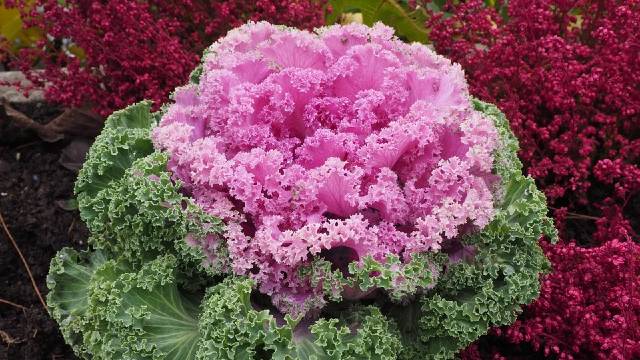Nothing can beautify the garden during the winter as much as ornamental cabbage or, as it is also called, ornamental kale. They tolerate winter exceptionally well, and tucked among other autumn vegetables and flowers, they can turn the garden into a spectacular visual experience. In addition to having an attractive appearance, they can also be consumed. Find out how you can grow them successfully.

Thanks to the large rosettes and beautiful, different colorssuch as cream, pink, purple and burgundy, ornamental cabbage and ornamental kale can from an ordinary garden and make a real spectacle.
Their colors intensify as the temperature dropsand especially below 10 degrees, and this is what sets them apart from other plants. Decorative cabbage it can survive up to -15 degrees and it will beautify the yard or garden with its beauty until the winter becomes too harsh.
Many people ornamental cabbage and ornamental kale mix. Technically they belong to the same family, and the only one difference is that ornamental kale has stiffer and curlier leaves on the edges, while ornamental cabbage has wide, flat leaves, edged with bright contrasting colors. However, due to its similarity and because they are looking for the same growing conditionsno wonder people mix them up.
Ornamental cabbage (and ornamental kale). can be planted individuallyamong less attractive plants, to read, and they look great in the garden as a border or in the yard next to the path. Rest assured that that part will attract the most attention of all household members, neighbors and passers-by.


In addition to low species, there are also species that have a long handle so they can be cut off and keep in mind.
Sowing and care
Ornamental cabbage is grown from seed and should be sown in mid-summer to be ready for autumn transplanting. Light is needed for seed germination, which means that it is not covered with soil, but only slightly pressed into the soil. The temperature should be between 18-20 degrees, and the plants should appear in 4 to 6 days.
If you have sown them in pots and want to transplant them into the garden, seedlings are transplanted when the plant develops 4-6 permanent leaves. It is best to plant them at a distance of 50-60 cm, as they usually grow in size.


An easier but more expensive option is to get ready-made heads from a nursery.
Ornamental cabbage, as well as ornamental kalethey like a sunny location, and moist and well-drained soil suits them. They are fed every third week with NPK fertilizer 10:10:10. How they like a lot of moistureit is recommended to put mulch around them, which will keep the soil moist.
Ornamental cabbage, as well as ornamental kale, are plenty resistant plants. They are prone to the same pests and diseases as cabbage and kale grown in the garden, but much less, given the time of year. If you notice, treat them with appropriate means, the same with which you treat ordinary cabbage and kale.
When they reach a height of approx 15 cmthe recommendation of experts is to remove the lowest leaveswhich will encourage the growth of the central tree and reduce the risk of fungal diseases.
Although considered edible, ornamental cabbage it has a bitter tasteand is most often used as decor for food on a plate. It can be consumed by the double boiling method da bi se sless bitterness or to be stewed in olive oil.
Source: Gardeningknowhow
Source: www.agromedia.rs


